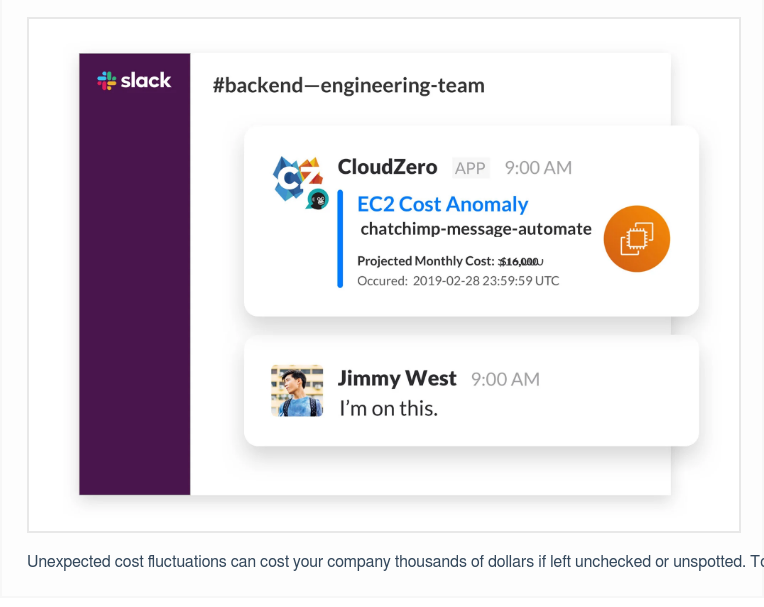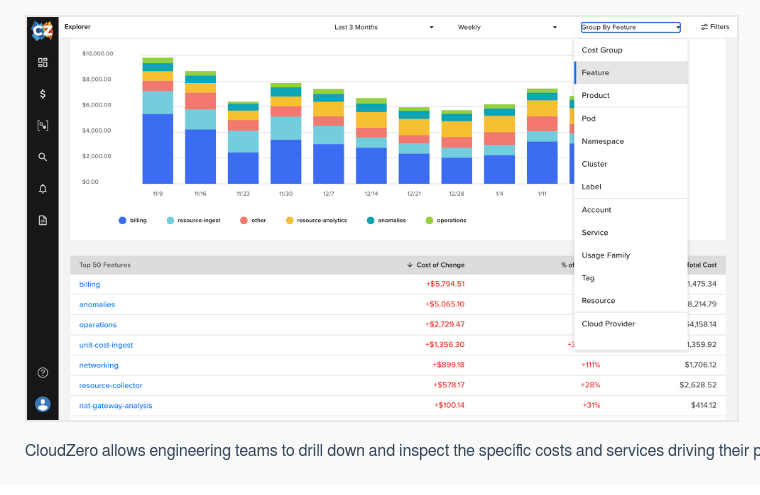Cloud cost intelligence is a game-changing way to understand where your money is going and what that means for your business. Any company with a cloud services bill can benefit from a cloud cost intelligence strategy that outlines which spending decisions are beneficial and which should be scrapped in favor of something else.
But let’s say you have done your background research and you understand what cloud cost intelligence is and why it matters. Where do you go from there?
If you take a look at the FinOps Foundation, you’ll notice that their “FinOps journey” takes place over three major phases. In this guide, we’ll break down these phases into real, actionable steps you can take to get your business’s cost intelligence strategy up and running.
As you move through each phase of developing your cost intelligence strategy, keep in mind that it all does not have to be perfect on day one. Most companies follow a “crawl, walk, run” maturity model that allows for learning and advancement. These maturity model guidelines can help you stay on the right track.
Cloud Cost Intelligence Strategy Phase 1: Inform
The two steps in this phase lay the foundation for your strategy.
Step 1: Get everyone on the same page
The first task is to make sure all internal stakeholders understand very clearly what they will get in return for all the time and effort involved in pursuing cost intelligence. Now is the time to explain, in great detail, the value the company will derive from pursuing a cloud cost intelligence strategy.
To do this properly, think about the type of stakeholder you will be addressing.
On one hand, you have the engineering teams who are in charge of building systems. On the other, you have the business teams that handle funding and overall management of the company.
Both sides have their own motivations and approach, and both need to be kept informed throughout the entire project so they can work together toward common goals.
Step 2: Build context
Context is the big-picture view that keeps the whole company aligned and informs future decisions. Because establishing context is so important, it may take considerable time and effort to complete this step. The end result will be worthwhile, however, because it forms the basis for all the steps that follow.
The process of building context can be further broken down into three parts:
Implement a tagging strategy
Tags are one of the best ways to organize cloud spend, but they do have shortcomings.
It’s often hard to understand how costs are broken down inside of Kubernetes environments, for example, and organizing spend across multiple cloud providers and accounts can be a nightmare.
CloudZero provides a method of looking at your cloud operations to help you achieve a comprehensive tagging strategy without having to do it perfectly.
CloudZero Dimensions allow you to pull cloud tags, Kubernetes labels and namespaces, additional Kubernetes metadata, and information from multiple cloud providers and services under the same roof, so you can view all your cloud spend with no information gaps.
Attribute and allocate spend
If you have a large, shared database, Kubernetes cluster, or any other multi-tenant infrastructure, you can now begin to break down the costs associated with specific items and attribute those costs to the teams, services, products, and features that use those parts of the system.
Once you know which costs are coming from where, you can track trends, generate reports, set up alerts and notifications, and monitor for anomalies.
Engage with your teams
Product and management teams will be able to set budgets and forecast spend by basing their calculations on the unit costs revealed by your tagging and cost allocation scheme. Likewise, engineering teams can use the information to understand the costs of their development choices.
It may be helpful to set up proactive notifications so that your engineering team gets alerted when costs start to rise beyond specified thresholds. This real-time feedback is crucial when engineers have to make decisions regarding major infrastructure options.
Finally, executive teams can look at the tagged data from a big-picture perspective and start to see how much it costs for engineering teams to deliver value.
Phase 2: Optimize
Once you have a barebones cost intelligence framework in place, it’s time to make incremental improvements.
Step 3: Optimize your organization strategy
Perhaps you need to condense some tags under one umbrella or separate out categories to track additional metrics you feel would be relevant. Make these adjustments first, before attempting to build a budget based on the organization scheme.
Step 4: Optimize your budgets
With organization complete, you will likely have a good understanding of what it costs to build, deploy, and maintain certain products and features. This information will become the basis for your future budget estimates.
Making improvements in steps three and four may take some trial and error, but ideally you want to get to a point where both components are working optimally in your environment before moving on to steps five and six.
The reason it’s so important to pause and optimize your organization and budget can be summed up in the well-known quote, “You show me your budget, and I’ll show you your priorities.”
If you have taken the time to properly organize your spend and set budgets accordingly, those decisions will ultimately drive the prioritization of tasks for your engineering teams. This makes completing the next two steps much simpler.
Step 5: Optimize your systems and code
If you present all the relevant metrics to each team, as discussed above, engineers may see opportunities to restructure code for cost efficiency or even time savings. Better still, they can do this with guidance from real-time notifications on how their choices have impacted costs.
Step 6: Optimize your infrastructure
Similarly, the engineering team can redesign the entire infrastructure of some systems if doing so proves to be cost effective.
It can be tempting to jump ahead to steps five and six, because this is the point where you could begin to notice real financial impacts.
However, attempting to redesign your code and infrastructure before you optimize your organization and budgets is often a waste of time, because you don’t have the necessary context to understand which changes will be worth the time and opportunity costs to implement.
Phase 3: Operate
The priorities in this third phase are to collect and act on feedback. The final steps may happen concurrently, one at a time, or in any given order. The important part is that they get addressed at some point so your organization can reach full maturity with its cloud cost intelligence strategy.
Step 7: Gather feedback for teams to use in building their systems
The easiest time to make changes is when a system is still in active production. If your teams receive real-time feedback, they can use that information to optimize code and infrastructure before a system is deployed.
Step 8: Gather feedback from deployed systems
Projects in active development may take priority, but real-time feedback from systems that have already been released is just as important to your optimization efforts.
Step 9: Monitor unit costs and the factors that may affect them
Many factors outside of engineering decisions can affect unit costs. While in general, it’s a good idea to make sure unit costs always stay flat or decrease, sometimes cost spikes are acceptable. Running a successful marketing campaign, for example, may result in more website traffic and more customers joining your platform, driving your customer acquisition costs higher.
The point is that you can look at the big picture and understand not only that your unit costs are changing, but why.
Step 10: Continue optimizing the overall governance of all systems
Even after you have developed a cost intelligence strategy and put it into daily use, the work is never truly finished. There will always be room for improvement. Continue to keep an eye on the key pieces of each preceding step, and tweak the details as opportunities for progress arise.
Want A Shortcut? CloudZero Gives You Hassle-Free Cost Intelligence
Working your way through all these steps isn’t going to be quick or simple if you try to go it alone. Tagging alone presents so many challenges that companies often take halfway measures and wind up with confusing, inconsistent tagging schemes. This only makes following the rest of the steps that much more difficult.
CloudZero is designed to handle the complex, tedious parts of developing a cloud cost intelligence strategy so you don’t have to. Our platform automatically adds tags, organizes your data, and measures the metrics relevant for your business, without you having to lift a finger.
Armed with all the information you will gather and put into context, product teams can decide which markets to push into and how to price packages for those markets; engineering teams can make educated decisions about how to code and structure systems for cost efficiency; and management can keep an eye on the details from a high level.
With true cost intelligence, the whole company functions as a cohesive unit.  to see the power of CloudZero for yourself.
to see the power of CloudZero for yourself.











